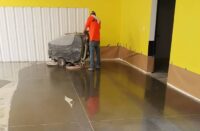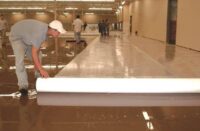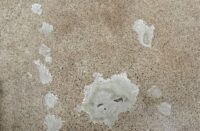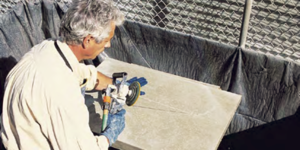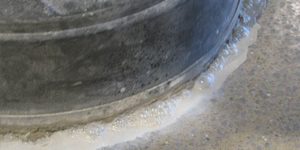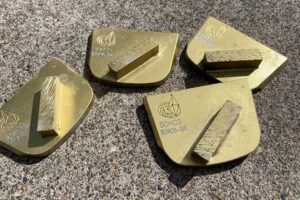
Proper diamond tools for polishing concrete is essential to getting it right. Choose the starting diamond grit and tooling segment configuration based on what’s best to achieve the job’s appearance objective. If there wasn’t one given, go with the random aggregate configuration.
Objective # 1
Random aggregate (doesn’t matter what the reveal is) — objective is cutting through the cap
Diamond Grit Recommendation
Start with a 60/80 grit and adjust from there
Objective # 2
Reveal cement fines — barely cutting into the cream (Class A)
Diamond Grit Recommendation
Start with a 50 hybrid (more cutting points but less ripping) or a 120/150 3-inch metal beveled puck, increasing surface area
Objective # 3
Reveal sand aggregate — achieving a salt-and-pepper look (Class B)
Diamond Grit Recommendation
Start with a 60/80 and crosscut, or rarely a 30/40
Objective # 4
Reveal coarse aggregate — achieving a terrazzo look (Class C)
Diamond Grit Recommendation
Start with a lower grit diamond tool 16/20 or 30/40
A bonded abrasive 16/20 grit tool has the least amount of diamonds (sharp cutting points) per segment, so it has fewer sharp points for cutting/scratching the surface.
Did you know?
- A bonded abrasive 30/40 grit tool has more diamonds per segment than a 16/20.
- A bonded abrasive 60/80 grit tool has more diamonds per segment than a 30/40.
- A bonded abrasive 100/120 grit tool has more diamonds per segment than a 60/80.
- And so on.
So, if you’re trying to cut through a hard cap, why use a 16/20 with less points? Instead, take advantage of more cutting points to break open the cap and expose the surface underneath without gouging trenches deeper than required by the appearance objective.
A lower-grit diamond tool will leave deeper valleys that will have to be removed with the next grit (more time).
Other options
- Use a higher grit and crosscut, or maybe even do a diagonal after that. Multiple passes with the same grit will save time because the previous scratch pattern doesn’t have to be removed. This method results in more refinement/removal within the same scratch pattern, bringing you closer to maximum refinement.
- Use a bonded-abrasive diamond tool with less segments to increase the down-pressure per segment, making the same grit and bond diamond more aggressive.
- You can use a bonded-abrasive diamond tool with more segments to decrease the down-pressure per segment, making the same grit and bond diamond less aggressive.
- Use water, and either damp or wet grind. The diamonds will cut easier, making them work better and be more aggressive than dry cutting.
Next time you reach for the proper diamond tools for polishing concrete, ask yourself: What is the appearance objective, and also how high can I start?
Have more questions or a suggestion for polished concrete topics? Feel free to contact Jennifer Faller at [email protected].
